The value for money of the investment in the carriers will be significantly reduced if the UK cannot afford enough aircraft to sustain operations over the carriers’ service life, warn the Public Accounts Committee.
In a report published today, the Public Accounts Committee commends the Ministry of Defence for delivering two aircraft carriers that form the bases for Carrier Strike but says this success risks being undermined by failure to provide the capabilities essential for the carriers to do their job.
The report states the following referring to the Ministry of Defence:
“The Department acknowledges that it will need more than the 48 Lightning II jets it has ordered so far to sustain Carrier Strike operations through to the 2050s and beyond. It originally intended to buy 138 aircraft, but its assumptions for using the carriers have changed since 2015 and it failed to give us a clear answer on how many more jets it now needs. The Department is considering the number and type of combat aircraft it will require in the future—across all operations—as part of its wider Air Combat Strategy. However, it could only provide us with a broad breakdown of the estimated costs of the Lightning II programme.
The Department has forecast that the programme’s whole life costs are £18.4 billion but, as at June 2020, it had an approved budget of only £10.5 billion. It has told us that each plane currently costs approximately $100m and that this price is falling. Nevertheless, this basic purchase price is just one element, and other costs must be taken into account, including the UK’s original investment to be a Tier 1 partner with the US, and the costs of weapons integration, sustainment and the supporting infrastructure. We are concerned with the Department’s lack of clarity on these costs as it will need to find additional funding to purchase all the jets it will require.”
The recommendation from the PAC states:
“Within one month of this report, the Department should provide the Committee with a full and detailed breakdown of Lightning II related expenditure to date, the approved budget and the forecast whole life costs of the Programme. It should also set out the additional whole life cost of buying more than 48 jets.”
Chair’s comment
Meg Hillier MP, Chair of the Public Accounts Committee, said:
“As things stand the UK has two world-class aircraft carriers with limited capability because the wider debate about the UK’s strategic defence capability – and funding – has been repeatedly delayed. This debilitating lack of clarity threatens our national defences yet it’s not likely to be resolved when the strategic defence review and the comprehensive spending review look likely to be out of step with each other once again.
The MoD and the nation it’s responsible for defending cannot afford for this rare beacon of success, in delivering the two carriers, to descend into yet another failure to deliver defence capability. The MoD must recognise that is a real risk, a real risk to a vital part of our national defences, and it must demonstrate now a clear plan to capitalise on the massive investment the UK has already made – and deliver Carrier Strike.”



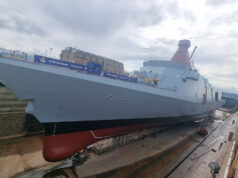
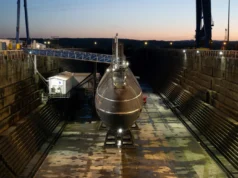

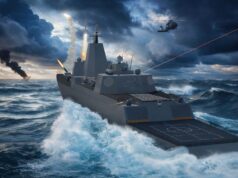
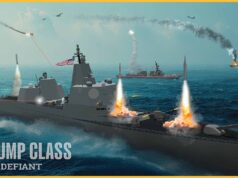
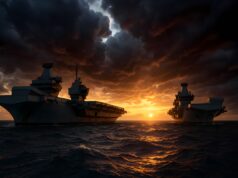
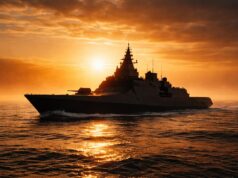

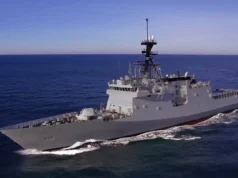

48 fighters is enough to have one carrier available all the time including maintenance and training. Obviously having 2 carriers operational at same time may need more planes, but also would require more manpower, escort ships etc… AFAIK it was never the intention to have 2 carriers operational at once, just one available 100% with carrier rotation possible by having 2 ships.
i don’t think 48 is enough, assuming we deploy 3 x squadron of 12, then we need at least additional 24 for training/maintenance and some spares. 48 would definitely not allow us to deploy the 2nd carrier in an emergency, even with minimum fixed wing, whereas 72 would do
Dont forget the requirement for land based strike aircraft, to fulfill the gap left by Tornado.
yes, we shouldn’t assume that FAA would take the whole fleet in an emergency, RAF have the requirement too
72 would do short term, but as the article points out this needs to sustain a genuine capability out to 2050. If we go for the bare minimum required now, you’re putting more wear and tear on individual airframes, increasing maintenance costs later in life.
To be honest i have never heard the UK actually reducing the original amount , certainly not to 48 .
Water is wet . Likely needs spelling out to the career hacks in Whitehall though
The number of planes is of no importance to our rulers. We see in the pass few days just what is their desire. The lot of them could not care a frig about this country or our defence.
Don’t really know why UKDJ has created 3 separate articles based from the same report ? gets everyone gossiping i guess ?
So people can have a good moan?
These are well publicised issues and they will be sorted.
I think we will get 60-70 F35B, that is fine.
FSS is late. There you go.
Crowsnest is late. There you go. But it is coming and will work.
I’m more concerned that sparse Merlins are being used to carry it rather than dedicated Merlins which coukd have been sourced from the HM1s which were not updated.
We can moan all we like, makes no difference. I look to the positives where the QEC are concerned.
“..which could have been sourced from the HM1s which were not updated”
Not anymore, those airframes have been robbed of all their useful parts. No chance of rebuilding them.
Such a shame.
Thats true but we still have the ability to build more Merlins if we wanted to. Which I would suggest we should, this is a truly brilliant rotor . Have an HM2 batch 2 order of say 8 cabs ( to cover the crowsnest role and increased need for ASW rotor with the carriers), with A companion order of HC4s to replace the Puma force. We really do want capitalise on our our carriers and that includes focusing our rotor assets to be more maritime focused, not something the RAF has really been good at before, but maybe for the future they will be.
Not bad idea 70 f35 enough for surge in Falkland (never happen, always have nato and USA as people keep saying) ant then any spare cash (lol) merlin and up arm river with martlet turrets
Very much in agreement. The recent Joint Warrior exercise demonstrated we have lots to be positive about, and F35 numbers will increase. We are at least getting the most advanced 5th gen fighter ever to take to sea into service. That alone is a huge achievement.
The Merlin, an absolute game changing sub hunter, modern, effective, good weapons load, excellent crews and superb avionics and equipment……having only 30 available to cover the fleet, the carriers and now crowsnest is a situation where the MOD should hang their heads in shame. However good move, albeit with reduced numbers (but not capability) is the move of the RAF Merlins to the CHF.
Agreed. Seems absurd.
Because it’s three distinct points.
I am much less concerned about the exact numbers of F35B than I am about the fact that if we had cats and traps, the entire fast jet fleet of the RAF could be embarked on the carriers. We really need to rebuild air defence and strike capabilities of the RAF before we waste yet more money on this hardly necessary vanity project.
Well, not exactly correct, RAF Typhoons are land based assets only. If we had CATOBAR ships then we would have been able to use either B or C variant-depending on what was brought.
I imagine that the RAF would have liked a A and/or B variant mix if affordable, of which only the B could be used at sea.
As it stands, the F35B is being purchased as a replacement for the RAF Tornado and FAA jet capability (Sea Harrier). So, yes, numbers are important, if we are realistically replacing two aircraft types from the two services, as they can only be in one place at a time, no matter how good they are. From this standpoint, 70 aircraft(if thats what we get over the next 4 years) are effectively replacing over 130 if you combine retired Sea Harriers and Tornadoes. So, still a bit short with numbers then….
Can’t expect the loony left to actually know what aircraft the RAF has.
No. Typhoons cannot land or take off from carriers. To suggest so is ignorant.
Peter what actually kills cats and traps for the U.K. is the brutal difficulty in keeping your pilots carrier qualified on Cats and Traps, it’s very difficult and for instance France literally staffs it’s air wing with qualified pilots by the skin of its teeth. If we had cats and traps carriers the handful of pilots on deployment would be the only pilots we could deploy period….there would be no scaling up or deploying land based squadrons ( you just get dead pilots and crews, crashed cabs and dented ships). But the one truly beautiful thing almost everyone forgets about our lovely carriers is that it’s takes only a couple of practice landings to qualify an F35B pilot for carrier opps, that means in short order you can move every usable f35 and pilot we have onto our carriers for a massive surge capability, no one else can do that.
Such a good point about the ease of qualifying pilots for carrier ops with F35B. People also overlook other fundamentals. For example, if a carrier takes a hit, it could lose launch and/or recovery with CATOBAR, leaving it without CAP and AEW. An F35B carrier could launch and recover F35B and Merlin for CAP and AEW, even from unprotected deck spots for F35B in extremis.
A Jonathan said, Cats and Traps are Brutal on the training requirements for pilots, but (as Deep32 alluded too) Cats and Traps are also brutal on Airframes.
There’s a reason the USAF doesn’t fly it’s fast jet fleet off of the Nimitzes, and it’s not because it would take a few minutes to attach a tailhook to an F-15. The forces subjected to aircraft operating off of CATOBAR means they have to be specifically strengthened in order to survive more than a handfull of take off and landign cycles. Plus you then have to Navalise them so that the constant exposure to salt water doesn’t corrode everything.
Tornado and Typhoon where never going to be flying off of QE, CATOBAR, STOBAR, or STOVL is irrelevant.
I have been saying this for months and surprisingly received quite a bit of criticism from some bloggers. The following was actually included in my submission to the ISDR…
” we do not have anything like the number of F 35’s required to properly fulfil the full capabilities of the Royal Navy and Royal Air Force Over £6 billion has been spent on two carriers, therefore we should be able to operate both, even if only in a surge or war fighting situation. We need a minimum of six squadrons each of ten aircraft Four should be permanently available at combat readiness, another a shadow squadron from within the O.C.U. and finally the O.C.U. itself. Sixty to sixty five aircraft and with this number we have no reserves”
I went on to say later about the split between the R.N and the R.A.F which complicates this particular blog item.
No we cannot operate 2 at the same time. To do that we would need 3 or more likely 4.
From what I remember the normal compliment for F35s was to be 24.
I didn’t say “at the same time” other than surge/war and the original aircraft compliment plan was for 36. Everything is being watered down.
May be fair enough… or not. But 36 aircraft would involve a full-on long period war fighting engagement. We are not looking for a war. Our purpose is deterrence. 24 will be on its first cruise. It will be a number of years before we get a significant number, and even as we speak, the full speed production of F35s has not got the go ahead.
Of more interest is just what the QE will be doing and where will it go next year. It will still be something of a learning exercise. Which allies if any will we meet and train (?) with. What diplomatic benefits do we expect.
Deterrence involves supporting allies and also offering alternatives to potential friends/allies who might otherwise be tempted by the dark side. Some nations may have fear, some might be corruptible. How do we use these ships, this strategy, to “encourage” these nations?
We have got these ships, it puts us on a maritime strategy, it takes us away from mainland Europe. They put us amongst the largest players in the military marine world. It would be good to know just what in clear terms they will do and how to gain benefit from them.
I’m sorry and I don’t mean to sound dismissive but by the time all these questions are answered they might have been sunk. We currently have 48 aircraft. At any one time around 15 of them are tied up with the OCU in one form or another. This leaves 33 aircraft to supposedly provide us with four squadrons which was the original intent…two RN and two RAF
. Even if the RAF has only one squadron we are now down to 21 aircraft for the RN. Two of the most modern carriers in the world with 21 aircraft. Where is the sense in that? On her recent deployment QE had only 5 UK aircraft.
We are buying them in batches. The existing ones will have to be updated to the latest version. Full rate production has not started yet or cleared to be approved. So it’s a slow proceess and the whole F35 programme is several years late…. And the B version is a small part of it.
The point I am trying to Make is that we are not ordering them at all at the moment . The last order was 2 /3 years ago and they won’t be with for another five years
Full production has started,but it’s been delayed. Any one running a business will tell you that if a production line has problems you make sure you keep your place in the queue
.We must do the same with the F 35 unless of course the rumours are true about cancelling most of the balance of cabs outstanding in which case we might as well sell the carriers to the French or maybe the Chinese…
Full rate production has not started. Its not been cleared by Congress. We have ordered 48. And we are in the queue for them. The plane itself is still some way from being fully functional… in the sense that Block 4 upgrades will make it quite a different and improved version of the original. And more expensive. Even block 4 is to be issued in waves. And indeed be better to wait for these later models to be bought later rather than earlier.
O.K. as long as your’e happy to have two nigh on empty aircraft carriers for the next ten years I suppose there can’t be a problem. I think we’re done.
I’m not done, you are just making up what I am saying.
I’m saying that this is a complex programme and it will take many years to complete it.
As a comparison, the Rafale programme – first flight 1985. 35 years ago and France has still not completed its (reduced) order. It took France 4 years from receiving its first M variant )2000) to its first naval squadron becoming operational. It’s last (3rd) squadron reformed as Rafales in 2016 – so thats 16 years since the first M variant was delivered.
Yes I agree, the Elizabeth’s can accommodate a lot of cabs, with credible claims in the low 70s so and air wing of 4 F35 squadrons ( 48 cabs) per carrier is not an inappropriate aim. So if we were looking to fully leaver our investment in these ships we should be looking at having the capacity to operate Close to100 f35s with 7 front line squadrons and the OCU squadron,
The really big selling point of the f35B over the F35C and cats and traps carriers is the ease with which you can qualify all your squadrons and surge fill both carriers quickly. It’s that ability that will make the Elizabeth’s a strategic level weapon. If we have 100 f35s available for service we could have them parked next to another county in a very short space of time. That’s something only the US can do at present. Carrier forces like the french are fixed in air wing size ( it’s limited by a fixed number of carrier qualified pilots that can’t be changed quickly).
we need to invest and double Down in our areas of strength and at present that is having two of the most cost effective flexible aircraft carriers in the world, some of the best navel fixed wing and rotors in the world to fill them ( infact the F35 and merlin are the best in their class) an escort fleet that again has some of the best ships in class and a Marine force that is brutally professional and has the ships to deliver them at the same time being supported by all the above.
Nothing new here in terms of issues. Good to see the PAC acknowledging the requirement to capitalise on the investment, together with the retreat of Cummings.
Personally we should have 6 squadrons of F35b’s.. + an OCU.
2 RAF 4 RN.
F35a’s are also optional
72 b’s minimum
58 a’s optional
But we will need attrition to top up add another 10 b’s so making total 82.
Rate of supply is also poor and that needs to be geared up quickly after 2023 to 20 a year to we get to 82. Then have an option to buy F35 a.
48 is roughly how many Sea Harriers were in service at their peak and that equated to 2 small squadrons fielding 7-9 air-frames when the Invincible’s deployed (often bolstered by some extra jets from the RAF).
With 1 carrier actually available for operations at any time an ambition for 24 regularly deployed and ability to surge to 36 seems reasonable.
For that you need at least 70 F35 in 4 squadrons, plus an OCU and small reserve. Any less and it’d be difficult to sustain that sort of commitment or tempo, let alone allow for some RAF training and deployments!
Hope we forget all this split A/B nonsense too!
The key here is to make sure we don’t go down the fairyland of splitting the buy between f35B and f35A. The marginal gains of the F35A are completely wiped out by the strategic mobility and sortie rate of the F35B linked with our carriers. So the F35 A gives you an extra 164 Nautical miles combat range….But and this is most important….it’s shacked the to closest airfield you have permission to use and if that 1000 nautical miles away your sortie rate is depended on a complicated mix of tankers and permission to overfly other counties…The F35Bs airfield can be moved 400-500 Nautical miles a day to get you within an un tankered combat range.
There is also survivability, the F35A is an shackled to a very limited number of 8000 feet runways. That’s major airports and airbases only, everyone knows where they are, you can’t move them and it does not take much to put big holes in them. The F35B although not able to operate from any old forest glad is able to operate from austere sites near any front or a carrier that moved.
So although the F35A has a greater combat radius the B has the great mobility can can be based closer to the enemy so can cover more and sortie faster. It’s also able to disperse and is harder to find and kill.
The very final point is that in reality our two carriers could carry around 50 F35Bs each. As noted the F35B is swift to carrier quality on so you can in theory surge all your deployable squadrons to the carriers very quickly. 6 B squadrons is a vast amount of power projection
I’m no expert but what I’ve read says with our limited buy any f35a saving would be lost through parts training and duplicated staff, only reason I can see is raf playing silly buggers, this should be shot in head and buried now, does any one know if actually being considered or is it just people chatting online?
I’m sure someone in the RAF wants it.
Reckon the f35 should all be handed over to the navy when tempest arrives it wasn’t the variant the airforce wanted as the infrastructure now has no requirement for vtol, the vtol variant of the f35 is more expensive has stubbier wings, less payload, less fuelload and less manouverability do to the lift fan weight in the front and it’s being shoehorned to fill the void of tornado. This variant is too expensive to not use in the role intended or carrier ops so it just makes sense once the door opens for tempest stealth aircraft to the RAF the RAF move the f35 over to the navy as they did with the Merlin
Its not the MOD that needs to recognise the need for more F35,s its the Treasury full stop
I would say peter that as a democracy we get the government we deserve. The treasury simply follow their political masters, who are voted in by the British public, who are quite frankly more interested in Tax cuts and headlines about immigration and dole scrounging than strategic planning, the importance of national infrastructure, sovereign capability and strategically important work forces.
On the usual 3 to 1 basis – 72 F-35Bs is surely enough.
24 deployed in the front-line (on one operational QE carrier), 24 used for training/reserve, and 24 in maintenance.
Those numbers also give us the opportunity to surge to a short-term Falklands type deployment of 36 units, if needed.
But the UK has given the American government a commitment to procure 138 F-35 aircraft – and that promise might need to be honoured.
90 should suffice if 1 RAF land based sqn is catered for. Ideally, the RAF should get (at least) two these.
138 was always as we all knew, complete BS!
There is a fair bit of RAF vs RN discussion here, but both forces need more aircraft: the Navy to fully equip its carrier force and maximise the investment and the air force to replace their Tornados. The RAF has been action constantly over the last decade so to suggest that their aircraft wouldn’t get used is nonsense: our governments first response is usually an air strike.
I have sympathy with the RAF wanting a split buy: their Combat Air has reduced from 300 aircraft a decade ago (Tornados, Harrier, Typhoon) to just over 100 frontline aircraft. Both the Japanese and Italians are looking at a joint fleet (although our ability to refuel the A is an issue).
Equally I agree with everyone who states that a QEC with 48 F35Bs would maximise the investment (which means 72 Bs incl. OCU)
In reality we need close to the full 138 ASAP (either Bs or a mix depending on the true cost analysis) to bring our Combat Air to the same levels of a decade ago and probably to order more over the lifetime of the programme.
When we look at affordability we need to look at what we are spending money on: what is more useful for our forces: 600 AJAX vehicles or 60 F35Bs? I know what my money is on……